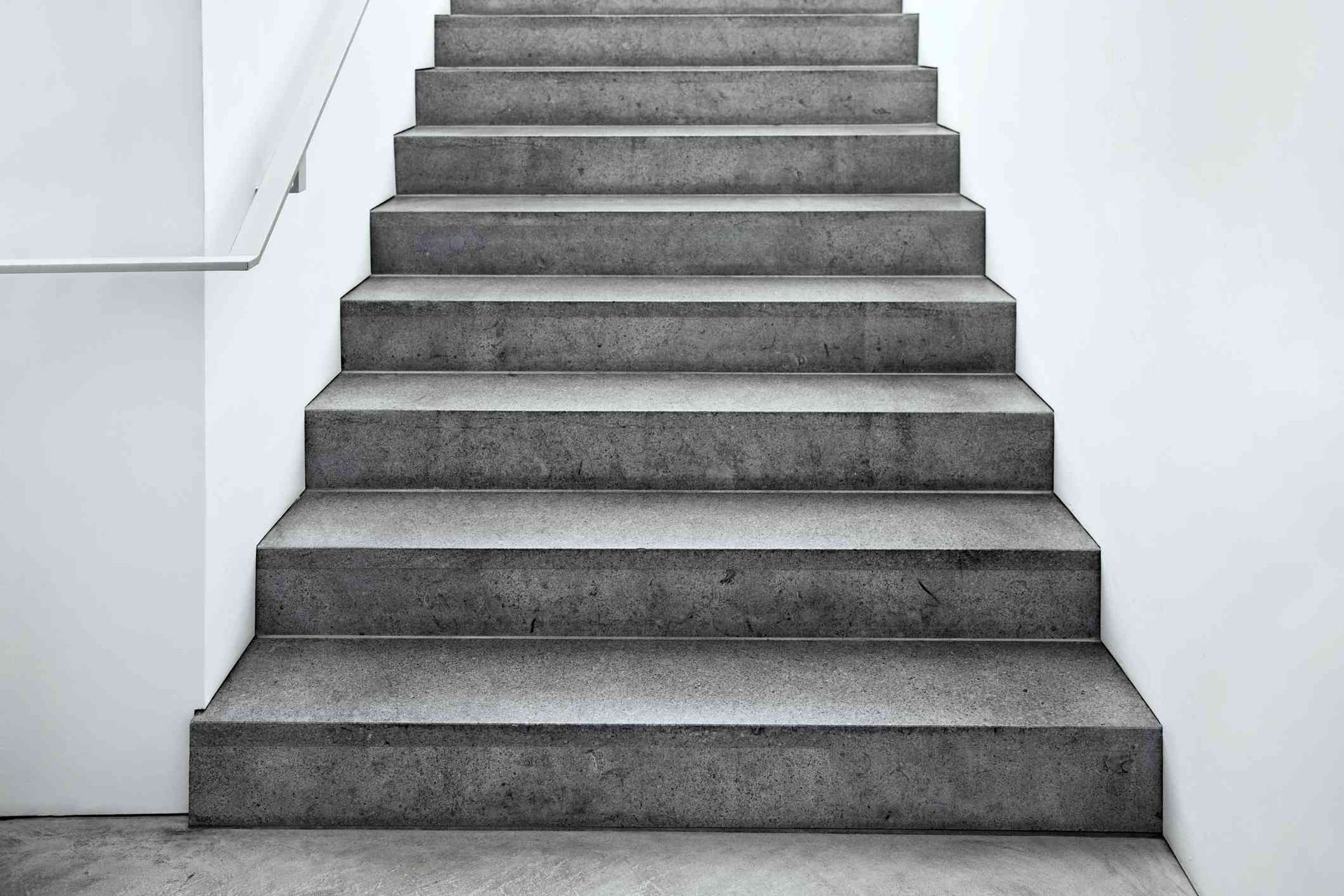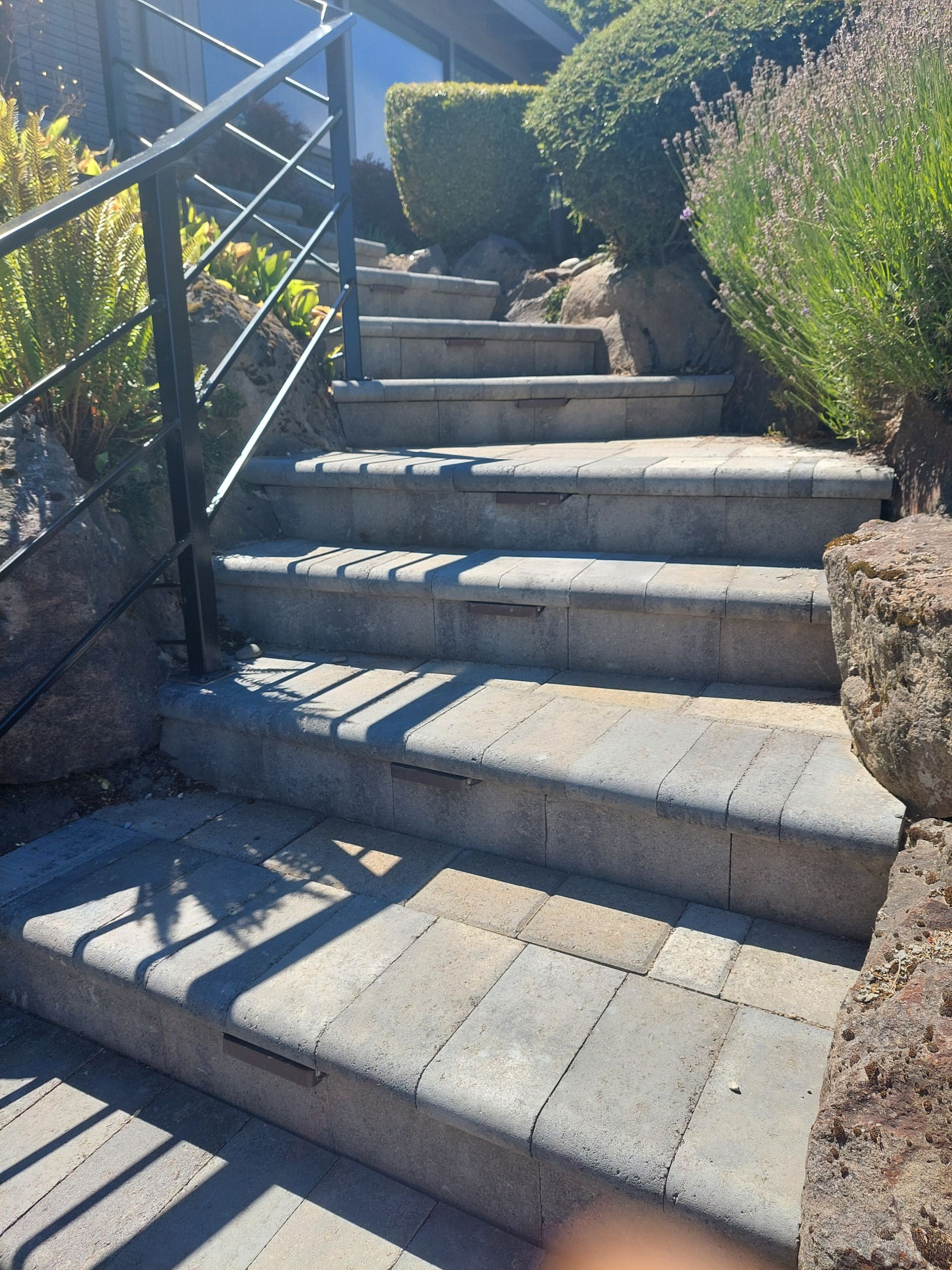Concrete Stairs
Services
Concrete Stairs
Concrete stairs are one of those things you only really think about when they’re done wrong. When done right, they’re solid, safe, and not something you need to fuss over for years. We've had to deal with a lot of freeze-thaw cycles, uneven terrain, and normal wear and tear around here. At Cox Decorative Concrete Inc., we have observed that concrete effectively manages all these challenges—as long as we prepare the base and consider the drainage.
Some folks ask about the difference between precast and poured stairs. Precast works well for simple layouts where the space is level and access is straightforward. Poured stairs give more flexibility if the slope’s tricky or if you want something that follows the lines of the landscape. Either way, it’s not just about looks—it’s about building something that won’t settle, crack, or become a hazard later. That’s the part of it that we focus on.

Concrete Stair Repairs – Cox Decorative Concrete Inc
Concrete stairs tend to last a long time, but even solid work wears down eventually—especially with years of foot traffic, freeze-thaw cycles, or settling soil underneath. In most cases, cracked or uneven steps can be repaired without tearing everything out. What matters is taking time to figure out why the damage happened in the first place. If that’s ignored, even a clean-looking patch might not hold up for long.
Occasionally it’s surface damage—a chip or worn edge—that just needs resurfacing. Other times, it’s movement underneath that calls for stabilizing or replacing part of the base. The goal isn’t just to fix what’s visible but to keep the stairs safe, usable, and less likely to need attention again anytime soon. For anyone unsure whether repair or replacement makes more sense, it usually comes down to how the stairs are aging and what caused the issue in the first place.
Fast and Easy Concrete Stair Installation
Precast Concrete
We manufacture precast steps off-site, cure them in a controlled environment, and deliver them ready for installation. The process is quicker than pouring on-site, which makes it a solid option if you're working within a short window or trying to limit disruption around the property. They work well when the layout is simple and the ground is already level.
Poured Concrete
When a site has slopes, tight access, or specific design needs, poured concrete steps tend to make more sense. They are formed immediately, allowing for adjustments as the work progresses. It does take longer since the concrete needs time to cure before the stairs can be used, but that trade-off often means a better long-term fit especially if durability or customization is important.

Affordable Concrete Resurfacing
Over time, concrete steps wear down—especially in areas with heavy foot traffic or harsh weather swings. Resurfacing is one way to deal with cracks, worn finishes, or aging surfaces without having to rip everything out and start over. As long as the structure underneath is still in excellent shape, adding a new surface can restore both safety and appearance.
This kind of work tends to come up when people are making repairs or trying to clean things up before a sale, but it’s also just part of proper upkeep. Instead of viewing surface damage as a failure, it’s helpful to think of resurfacing as part of the long life of concrete—a way to extend it, not replace it. Ultimately, resurfacing tends to be less intrusive and more cost-effective compared to a complete replacement.
Frequently Asked Question
How long will stamped concrete hold up?
If it’s done right and taken care of, stamped concrete can last decades. The key is keeping it sealed every few years, especially in spots that get a lot of sun or weather. When maintained, it wears well and holds its color longer than most folks expect.
What’s the upside to precast stairs versus poured ones?
Precast stairs show up ready to go, which saves time if the layout is simple and flat. Poured stairs are better when the ground's uneven or the job calls for something custom. One’s not better than the other—it really comes down to what fits the space.
Can worn-out steps be fixed without replacing the whole thing?
In a lot of cases, yes. If the base is still solid, a resurfacing job can clean up chips, cracks, and worn finishes without having to start over. But if the concrete’s crumbling underneath, it might be smarter to rebuild from the ground up.
Does stamped concrete get slippery when wet?
It can. The sealer gives it a sheen, which can be slick, especially on slopes or near pools. There are ways around it—we usually recommend adding a grit to the sealer or using a pattern that’s naturally more textured.
When should concrete steps be resurfaced instead of replaced?
If the steps are structurally sound and the damage is mostly on the surface—peeling, pitting, or flaking—resurfacing is usually enough. It won’t fix deep cracks or bad settling, but for surface wear, it’s a solid middle-ground solution.
Get the Concrete Stairs You Need
Planning is the key to creating good stairs. Whether you're dealing with repairs or starting fresh, it’s worth asking how
the build fits your space, slope, and weather. The right approach keeps things safe, solid, and low-stress.